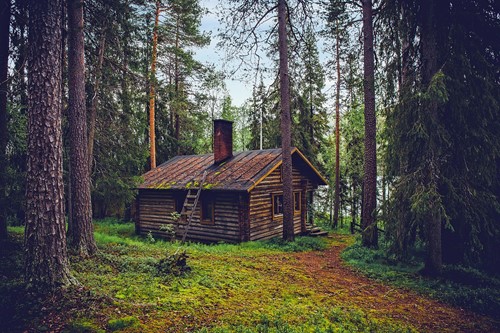
Log cabin designs have come to the forefront of architectural trends by offering homeowners a rustic, comfortable aesthetic in a busy modern world. From craftsman to contemporary, log cabin floor plans come in many styles and layouts to fit the needs of today’s homeowners.
The unique construction, appearance and characteristics of these stylized house floor plans make it an attractive option for those considering new construction.
However, there are many factors worth considering before you take the next step in your log cabin journey. Here are some of the most important things to know about cabin plans and construction:
While a certain design might come to mind when you think of log cabins, no two cabin house plans are exactly alike. There is potential for style differences in multiple aspects of the home, such as the specific trees the logs came from and the methods used to stack them into walls.
One major choice of style in cabin plans comes from the difference between sawn logs and milled logs. Sawn logs are always sawed in consistent widths, though they can have a unique appearance due to age and natural wood grain. Milled logs are put into a mold to achieve carefully regulated sizes and shapes, which creates a more uniform aesthetic.
As for cabin floor plans, there are plenty to choose from. While cabins traditionally emphasize casual indoor-outdoor living spaces like covered porches and open kitchens, you have the freedom to pick the style of interior you prefer.
The rustic style of a log cabin house plan celebrates the sense of nostalgia for a simpler age. However, for modern homeowners, this does not necessarily mean building and caring for a cabin is easy. In fact, certain aspects of maintenance and utility installation can be more difficult than other styles of modern home.
One major example is pest control. Relying on natural wood logs for construction includes the risk of unknowingly including insects in your household. To prevent uninvited guests, it’s crucial to inspect the exterior of your home regularly for any sign of infestation.
Natural wood requires staining and refinishing over time as the elements gradually take their toll. Some cabin experts recommend reapplying wood finish to your entire exterior every three to five years. Gaps can also occur between logs due to moisture and temperature changes.
Is a cabin house design right for you? For many, the benefits of these house plans far outweigh the extra effort and possible maintenance issues. Others may decide they prefer to incorporate the rustic floor plans into their existing homes.

I take a personal approach to helping you sell your home and getting your home ready for the sale market, showing you the comps for homes that compare to yours, doing a net sheet so you can see what your proceeds will be at closing, showing you how the appraiser appraises your home for the new buyer, answering all your concerns on what needs to be done for marketing your home.